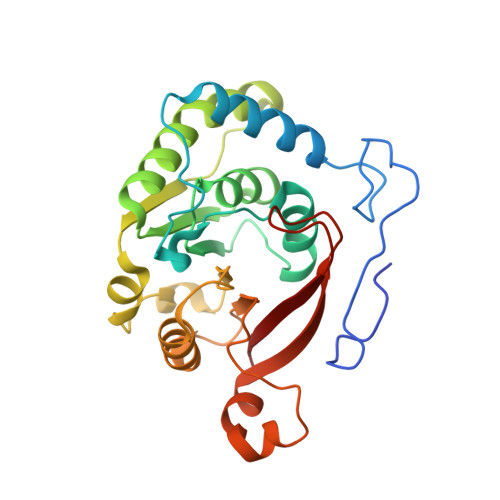Two DOT1 enzymes cooperatively mediate efficient ubiquitin-independent histone H3 lysine 76 tri-methylation in kinetoplastids.
Frisbie, V.S., Hashimoto, H., Xie, Y., De Luna Vitorino, F.N., Baeza, J., Nguyen, T., Yuan, Z., Kiselar, J., Garcia, B.A., Debler, E.W.(2024) Nat Commun 15: 2467-2467
- PubMed: 38503750
- DOI: https://doi.org/10.1038/s41467-024-46637-6
- Primary Citation of Related Structures:
8FJM, 8FJN - PubMed Abstract:
In higher eukaryotes, a single DOT1 histone H3 lysine 79 (H3K79) methyltransferase processively produces H3K79me2/me3 through histone H2B mono-ubiquitin interaction, while the kinetoplastid Trypanosoma brucei di-methyltransferase DOT1A and tri-methyltransferase DOT1B efficiently methylate the homologous H3K76 without H2B mono-ubiquitination. Based on structural and biochemical analyses of DOT1A, we identify key residues in the methyltransferase motifs VI and X for efficient ubiquitin-independent H3K76 methylation in kinetoplastids. Substitution of a basic to an acidic residue within motif VI (Gx 6 K) is essential to stabilize the DOT1A enzyme-substrate complex, while substitution of the motif X sequence VYGE by CAKS renders a rigid active-site loop flexible, implying a distinct mechanism of substrate recognition. We further reveal distinct methylation kinetics and substrate preferences of DOT1A (H3K76me0) and DOT1B (DOT1A products H3K76me1/me2) in vitro, determined by a Ser and Ala residue within motif IV, respectively, enabling DOT1A and DOT1B to mediate efficient H3K76 tri-methylation non-processively but cooperatively, and suggesting why kinetoplastids have evolved two DOT1 enzymes.
Organizational Affiliation:
Department of Biochemistry and Molecular Biology, Thomas Jefferson University, Philadelphia, PA, USA.


















